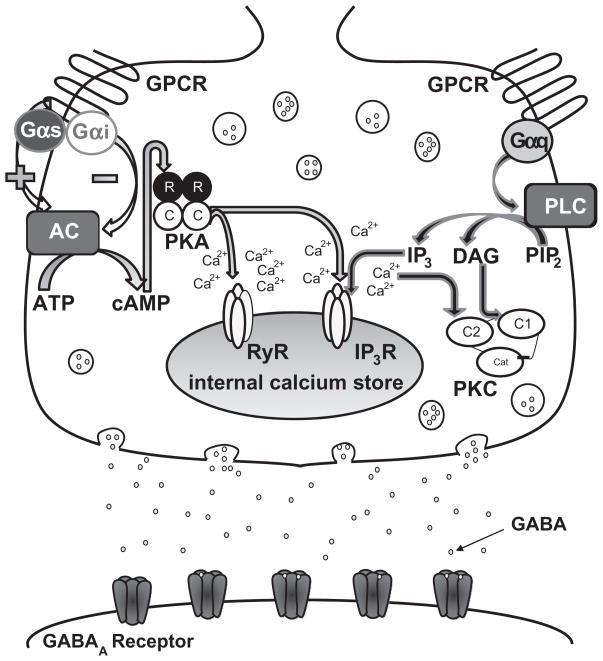Fig. 2.
Ethanol, GABAergic neurotransmission, and GPCRs. Ethanol has been shown to act directly at the postsynaptic GABAA receptor, but ethanol can also increase the amount of GABA released from the presynaptic terminal. While the mechanism mediating this ethanol effect is not fully understood, evidence suggests that the GPCRs and their respective pathways are involved. It is unlikely that ethanol is binding directly to the GPCR and instead could be acting upstream of the receptor by increasing the amount of ligand reaching the receptor or changing the receptor properties. Ethanol could also interact directly with one of the intracellular messengers (see the text for a detailed description of the GPCR pathways).

